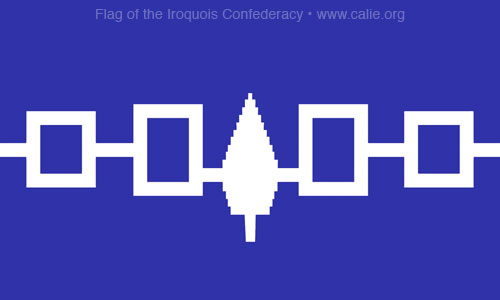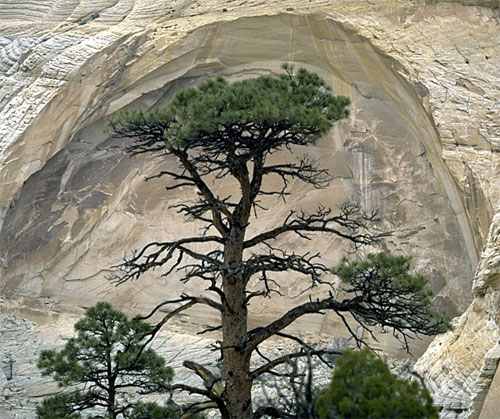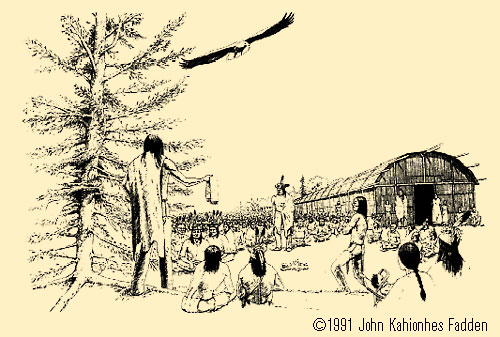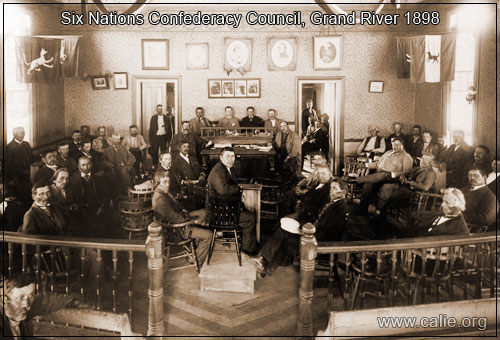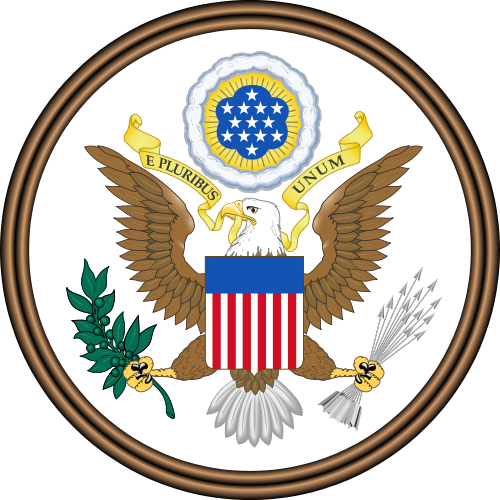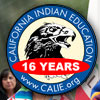 |
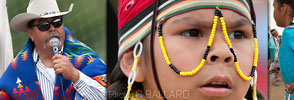 |
 |
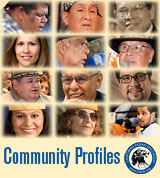


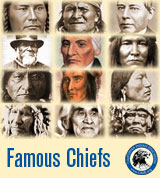



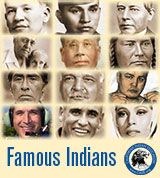


Publishing Corner: Indian Community: Science & Wonder Indian Heros: California Indian Art: CALIE Library: Academic Financial Aid: Tribal Governments: Indian Gaming: |
Our Commander in Chief is being very Presidental. What are American political roots?
The Iroquois Confederacy (also known as the "League of Peace and Power"; the "Five Nations"; the "Six Nations"; or the "People of the Long house") is a group of First Nations/Native Americans that originally consisted of five nations: the Mohawk, the Oneida, the Onondaga, the Cayuga, and the Seneca. A sixth tribe, the Tuscarora, joined after the original five nations were formed. Although frequently referred to as the Iroquois, the Iroquois Confederacy Nations refer to themselves collectively as Haudenosaunee.
The Haudenosaunee flag represents the original five nations of the the Iroquois Confederacy that were united by the Peacemaker. The tree symbol in the center represents an Eastern White Pine, the needles of which are clustered in groups of five. The flag is based on the "Hiawatha Wampum Belt ... created from purple and white wampum beads centuries ago to symbolize the union forged when the former enemies buried their weapons under the Great Tree of Peace."
The combined leadership of the Nations comprising the Iroquois Confederacy is known as the Haudenosaunee, a term that the people use to refer to themselves. Haudenosaunee means "People of the Long House." The term is said to have been introduced by The Great Peacemaker at the time of the formation of the the Iroquois Confederacy. It implies that the Nations of the the Iroquois Confederacy should live together as families in the same longhouse. Symbolically, the Seneca were the guardians of the western door of the "tribal long house," and the Mohawk were the guardians of the eastern door.
The Basis for The Founding Fathers The decision-making process mirrored the creation of peace among the Iroquois. The Onondaga introduced a topic and offered it to the Mohawk for consideration. When a decision was reached, they passed it to the Seneca. A joint decision was announced to the groups across the fire for deliberation. When these groups reached an agreement, they reported to the Onondaga Council Leader. If he agreed, the decision was unanimous. If not, the negotiation process began again with the Mohawk. If unanimity were impossible, the matter was set aside and the fire covered with ashes. At the conclusion of a session, the acts of the council were recorded in the belts of wampum that chronicle events of significance.
The structure of the Iroquois Confederacy inspired the American Colonists' development of the U.S. government. On June 11, 1776 while the question of independence was being debated, the visiting Iroquois chiefs were formally invited into the meeting hall of the Continental Congress. There a speech was delivered, in which they were addressed as "Brothers" and told of the delegates' wish that the "friendship" between them would "continue as long as the sun shall shine" and the "waters run." The speech also expressed the hope that the new Americans and the Iroquois act "as one people, and have but one heart." After this speech, an Onondaga chief requested permission to give Hancock an Indian name. The Congress graciously consented, and so the president was renamed "Karanduawn, or the Great Tree." With the Iroquois chiefs inside the halls of Congress on the eve of American Independence, the impact of Iroquois ideas on the founders is unmistakable. History is indebted to Charles Thomson, an adopted Delaware, whose knowledge of and respect for American Indians is reflected in the attention that he gave to this ceremony in the records of the Continental Congress. Haudenosaunee impact on the US of A national icons The eagle, symbolizing the Iroquois Confederacy, held six arrows, one for each of the Six Nations. The eagle on the American seal holds 13 arrows, one for each of the 13 original states. From the US Government's official booklet on the Great Seal, describing the lengthy search for a suitable design: The Congress still was not satisfied. On June 13, 1782, it presented the collected work and recommendations of the three committees to Charles Thomson, Secretary of Congress. Thomson was not an artist, but he was a practical man with the ability to get things done. He selected the best features of all the previous designs, assigning prominence to the eagle. Feeling that the new nation's symbol should be strictly American, however, Thomson replaced Barton's crested Imperial eagle with the native American bald eagle, wings extending downward as though in flight. He placed in the left talon a bundle of arrows and in the right, the olive branch. Providence. Note the connection between the seal's design and Thomson's deep familiarity with Indian culture. Most Indian tribes hold the eagle sacred. They don't feel the same about Ben Franklin's choice for a national symbol, the wild turkey." www.bluecorncomics.com/july4th.htm Eagle Another symbol taken from nature is the eagle. The eagle, a powerful bird, can fly high and far and has very good eyesight. This bird was chosen by the Haudenosaunee to fly above the Tree of Peace. The eagle’s sharp eyes can see afar to guard against anything that may approach the Tree of Peace with evil intent. The piercing scream of the eagle warns the people when the Confederacy is threatened. The symbolism of the eagle means that the Haudenosaunee government should be protective of its people and be watchful for anything that might harm the Confederacy.
Cluster of Arrows The cluster of arrows is another symbol of unity. The Peacemaker, a Huron man by the name of Deganawida, who was considered to be the founder of the Confederacy, used the symbol of bound arrows to point out the importance of unity. The Peacemaker took one arrow and easily broke it. He then took two arrows, and with a little more effort he broke them. Three, then four, arrows were clustered and broken, but when five arrows were bound together, he could not break them. The cluster of arrows, then, symbolizes the strength that results from the joining together of several nations. www.yorkers.org/leaflets/pdfs/Haudenosaunee.T.pdf In 1754, Franklin met with Colonial and Iroquois leaders to discuss how the colonies might govern themselves. It was called the Albany Congress. Hendrick, a Mohawk chief, showed them how the Iroquois Confederacy worked. "To illustrate the power of unity," Mr. Tarbell says, "Hendrick used the example the Iroquois used when their nations came together: He held up one arrow and broke it, then held up five arrows bound together and showed how they could not be broken." The next day, Tarbell notes, Franklin presented a plan for a new American government designed to weld the individual Colonies into a unified whole. It was called the Albany Plan of Union, and it included many features of Iroquois law. An Indian symbol on the dollar bill? The Founding Fathers didn't adopt as much of the Iroquois model as Franklin had advocated. Some scholars dismiss the idea that Iroquois government had any influence on the shape of the United States government today. But then why were Iroquois leaders invited to hear debates about the Declaration of Independence? Tarbell asks. The native delegation slept in Philadelphia's Independence Hall, in a room just above the one in which the debates took place. To this day, Iroquois law remains unchanged. It continues to guide the Grand Council of the People of the Longhouse and has influenced nations outside of the Iroquois Confederacy as well. Constitution of the Iroquois Confederacy Permission is hereby granted to download, reprint, and/or otherwise redistribute this file, provided appropriate point of origin credit is given to the preparer(s), the National Public Telecomputing Network and the Constitution Society. The Six Nations: Oldest Living Participatory Democracy on Earth A collection of documents and images reviewing the Iroquois Confederacy, the interaction with the Founding Fathers. |
CALIF INDIAN EDU NETWORK: AHMIUM.org | SCAIR.org | SDICENTER.org | APAPAS.com
—
WEB SITE DESIGN
www.calie.org COPYRIGHT 2008-Present • ALL RIGHTS RESERVED

